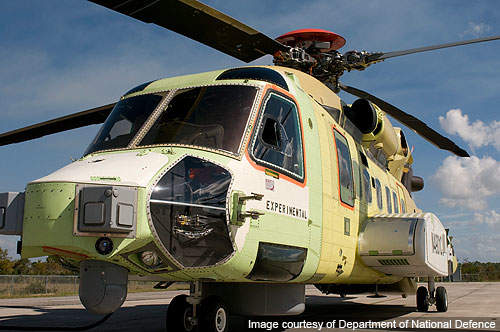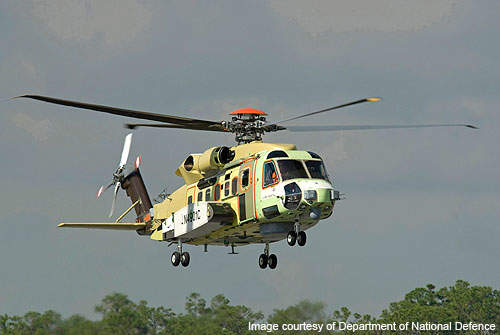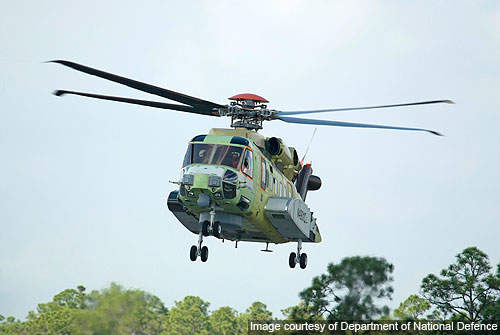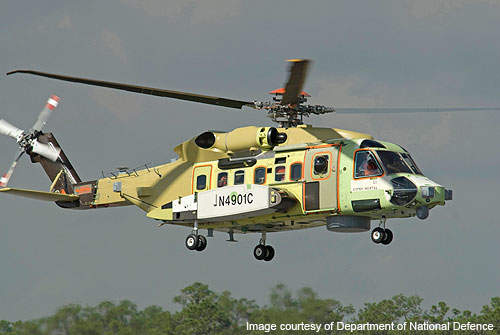The Sikorsky CH-148 Cyclone is a twin-engine, multi-role maritime helicopter manufactured by Sikorsky Aircraft Corporation for the Canadian Forces. CH-148 is to replace Canada’s main ship-borne maritime helicopter, the CH-124 Sea King.
The CH-148 will be operated by the Canadian Forces Air Command. It can conduct anti-submarine warfare (ASW), anti-surface warfare, surveillance and control, search and rescue (SAR) missions. It will also provide tactical transport for national and international security missions.
The helicopter has been developed under the Canadian Forces’ Maritime Helicopter Project (MHP). The project provides scope for the acquisition of 28 new, fully-equipped CH-148 Cyclone helicopters along with a long-term in-service support program. It will also provide 12 C-RAST helicopter haul-down systems for Halifax class (HFX) ships to accommodate the CH-148 Cyclone.
Orders and deliveries
In November 2004, Canada’s Department of National Defence placed a C$1.8bn contract with Sikorsky to produce 28 helicopters, with the first aircraft delivery expected in January 2009. The first production aircraft completed its maiden flight in November 2008. It arrived at CFB Shearwater in February 2010. The deliveries are delayed due to restrictions by US International Traffic in Arms Regulations.
The first 19 of the 28 CH-148 Cyclones will be supplied in interim standard rather than at the original contractual specifications. Maintenance and aircrew personnel will conduct initial operational testing and evaluation of the interim helicopters prior to deployment. The fully compliant helicopters will be delivered in 2012. All interim-standard helicopters are to be retrofitted and delivered to DND/CF by December 2013.
The German navy is also planning to replace its current fleet of Sea King helicopters with Cyclone helicopters.
Design and features
CH-148 is a military variant of the Sikorsky S-92 helicopter. It features a composite aluminium airframe with lightning-strike and high-intensity radio frequency pulse protection. It incorporates a wider four-bladed articulated composite main rotor blade in comparison with the S-70 Blackhawk. The tapered blade tip is angled downward to cut down noise and increase lift.
The helicopter can operate with modern high-tech naval frigates and is equipped with numerous safety features. Flaw tolerance, bird strike capability and engine burst containment are integrated into the design.
Avionics
CH-148 is equipped with APS-143B radar, the SAFIRE III EO System, L-3 HELRAS sonar and Lockheed Martin AN/ALQ-210 electronic support measure (ESM) system. Its aircraft management system (CMA-2082MH) is provided by CMC Electronics.
General Dynamics Canada was contracted in 2004 to provide the mission systems for the entire fleet of 28 helicopters. These mission systems include radar, ESM, acoustics, self-defence, navigation and communication systems.
Armament
Armaments include door-arm mounted GP machine guns and two MK 46 torpedoes on BRU-14/A weapon or stores rack mounted in folding weapons pylons.
Countermeasures
The helicopter is fitted with sensor equipment to search and locate submarines during ASW missions. A modern countermeasures suite is incorporated to defend the helicopter against incoming missiles.
Engine
The CH-148 is powered by two GE CT7-8A engines. A new CT7-8A7 engine based on the CT7-8A1 is being developed by General Electric to replace the current, less efficient engine.
The new engine will be tested and certified by June 2012. It will incorporate modified fuel manifold and fuel nozzles.
Sikorsky will deliver six interim CH-148 Cyclone helicopters fitted with CT7-8A1 engines to the Canadian Forces before the final delivery deadline.
Performance
The Cyclone is equipped for day-and-night flight operations, and can fly in adverse weather conditions in temperatures ranging from -51°C to +49°C. It can fly at a maximum altitude of 15,000ft. The maximum cruise speed is 165kt and the best range speed is 137kt.
The helicopter can fly to a range of 450km without refuelling.








